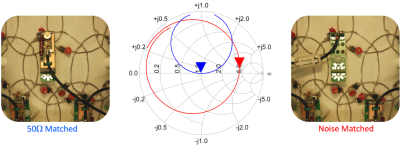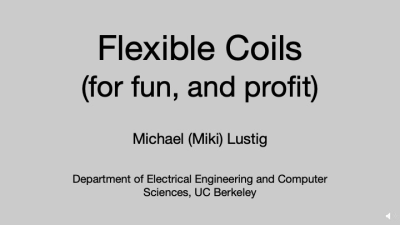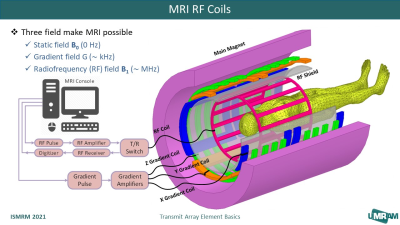Weekend Course
RF Coils for Fun & Profit
ISMRM & SMRT Annual Meeting • 15-20 May 2021

| Concurrent 3 | 14:30 - 15:15 | Moderators: Ergin Atalar & J. Thomas Vaughan |
 |
RF Theory for Coil Making
Alireza Sadeghi-Tarakameh
First, radiofrequency (RF) transmit coils excite the nuclei of an imaging sample, and then, RF receive coils detect the MRI signal from excited nuclei during their relaxation. Both transmit and receive coils could be surface or volume coils as well as single-channel or multi-channel coils. In this presentation, we briefly discuss each category. We also present some fundamental theories and insights for coil making. Eventually, some recently published works about transmit and/or receive arrays are presented.
|
|
 |
Coil-Building Demonstration
Boris Keil
In this educational video, we describe the step-by-step procedure for constructing and tuning highly parallel array coils: i) the layout of the array elements, ii) creating and tuning a single loop element, iii) estimating the coil quality factor, iv) adjusting the single loop and match circuit to optimize preamplifier decoupling and v) active PIN diode detuning circuitry, v) placing the neighboring elements to allow them to be efficiently constructed and inductively decoupled, vi) assembling the array, vii) decoupling the array elements from one another, viii) tune and match the coil elements, and iix) performing final bench tests
|
|
| Preamplifier Decoupling: Theory & Practice
Randy Duensing, Christian Findeklee
Since the introduction of RF coil arrays (Roemer, et al), the dominant approach to RF coil matching has been to use a degree of freedom to produce a large impedance mismatch between coil and preamplifier while maintaining an approximate noise optimal impedance for each channel individually. In reality, an array of RF coils has shared impedances which means that this approach is suboptimal at all locations in the FOV, and, in optimal reconstruction algorithms the impedance mismatch is independent of SNR. Knowledge of the coupling matrix allows for optimization of local SNR via a system tune/match approach.
|
||
| Preamplifier Decoupling: Theory & Practice
Christian Findeklee
|
||
 |
Flexible Coils
Michael Lustig
Flexible coils provide comfort and fit to patients, improving image quality, SNR, acceleration and patient management. This talk discusses the challenges in designing and manufacturing flexible coils. And then goes through the different existing an emerging technologies for making the next generation flexible receiver arrays.
|
|
 |
Transmit Array Element Basics
Ehsan Kazemivalipour
A safe and efficient MRI test would rely on informed specification, design, implementation, assessment, and application of appropriately selected RF coils. Transmit array RF coils with multiple transmit elements provide the additional degrees of freedom that can be used to enhance field uniformity, accelerate acquisition time, enable RF shimming while intending to mitigate SAR hotspots, and increase power efficiency. Transmit array's performance can gain considerably from the parallel transmission technology when the array designs meet particular specifications, such as low coupling among individual array elements and appropriate interaction with subjects under test to provide a sufficient B1+ field efficiency.
|
|
| EM Modelling of Coils
Bastien Guerin
I will present some key tools for simulation of RF coils. First, I will review the three main types of EM solver: Finite difference time domain, finite element modeling and integral equation. I will introduce the co-simulation method, a powerful method for tuning, matching and decoupling of coil that requires a minimum number of EM solves. I will then present a simulation study that aims to find the ideal pTx coil for 3T body and head imaging. Finally, I will present our recent work on ultra-fast SAR calculation as the patient lies in the scanner for individualized SAR prediction.
|
The International Society for Magnetic Resonance in Medicine is accredited by the Accreditation Council for Continuing Medical Education to provide continuing medical education for physicians.